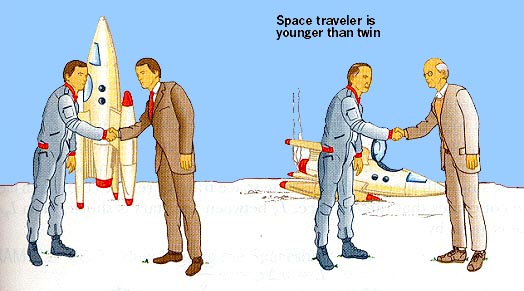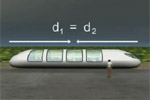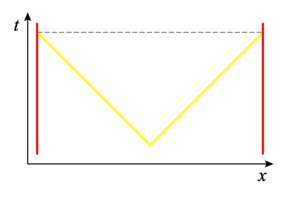TWIN PARADOX
Herb stays on the Earth while his twin Hubert travels to Gliese 581 b
20 light years away in a high speed rocket which travels at 99 % of the
speed of light. At Gliese 581 b, Hubert stops, quickly
turns-around, and returns to the Earth. Upon their reunion, Hubert
finds that Herb is ~40 years older while he has
aged only ~5.7 years! The traveling twin has aged significantly
less than the stay at home twin. This seems to
make sense. So, where is the Paradox? Well, the Paradox artises because
of the symmetry of time dilation in that only relative motion is needed for
time dilation. So, from the the point of view of Hubert, Herb was the
traveling twin, so why shouldn't Herb have aged less?
|







